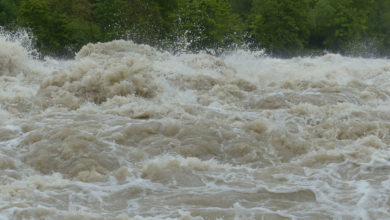
Mankind’s destruction of nature is driving species to the brink of extinction at an “unprecedented” rate, the leading wildlife conservation body warned Thursday as it added more than 7,000 animals, fish and plants to its endangered “Red List”.
From the canopies of tropical forests to the ocean floor, the International Union for the Conservation of Nature (IUCN) said iconic species of primates, rays, fish and trees were now classified as critically endangered.
The group has now assessed more than 105,000 species worldwide, around 28,000 of which risk extinction.
While each group of organisms face specific threats, human behaviour, including overfishing and deforestation, was the biggest driver of plummeting populations.
“Nature is declining at rates unprecedented in human history,” said IUCN acting director general, Grethel Aguilar. “We must wake up to the fact that conserving nature’s diversity is in our interest.”
In May the United Nations released its generational assessment of the state of the environment. It made for grim reading.
The report warned that as many as one million species were now at risk of extinction, many within decades, as human consumption of freshwater, fossil fuels and other natural resources skyrockets.
It found that more than 90 percent of marine fish stocks are now either overfished or fished to the limit of sustainability.
The IUCN singled out a number of sea and freshwater fish that now occupy its highest threat category of “critically endangered” — the next step on the Red List is extinction.
Wedgefishes and giant guitarfishes, known collectively as Rhino Rays due to their elongated snouts, are now the most imperilled marine families on Earth.
The False Shark Ray is on the brink of extinction after overfishing in the waters off of Mauritania saw its population collapse 80 percent in the last 45 years.
Seven species of primate are closer to extinction on the new list, including the Roloway Monkey of Cote d’Ivoire and Ghana, with fewer than 2,000 individuals left in the wild.
Prime culprits are humans hunting the animals for bushmeat and “severe habitat loss” as forest is converted to land to grow food.
40 percent of all primates in West and Central Africa are now threatened with extinction, according to the IUCN.
The updated list shows that over half of Japan’s freshwater fish and more than a third of Mexico’s are threatened with extinction due to the loss of free-flowing rivers and increasing pollution.







